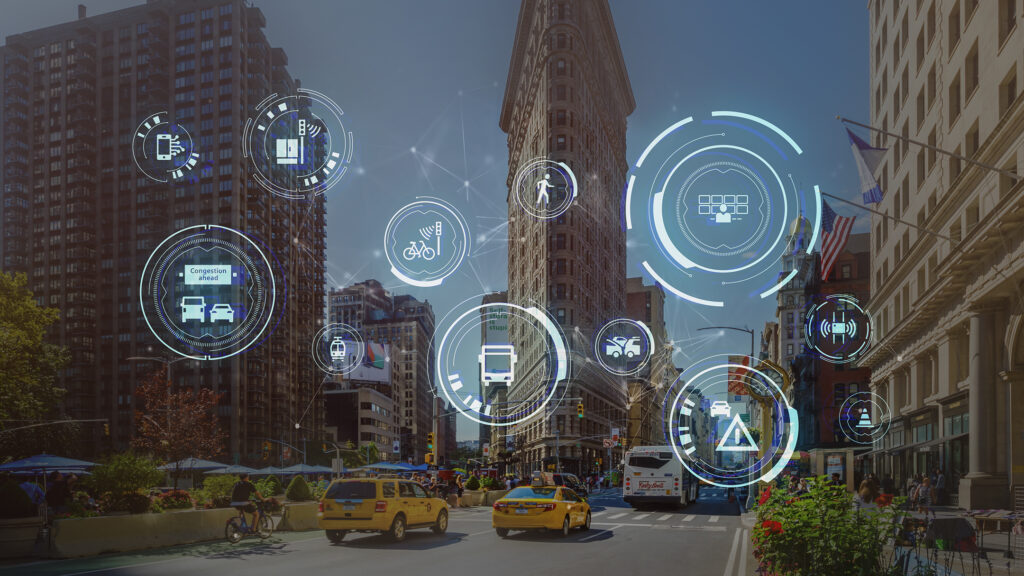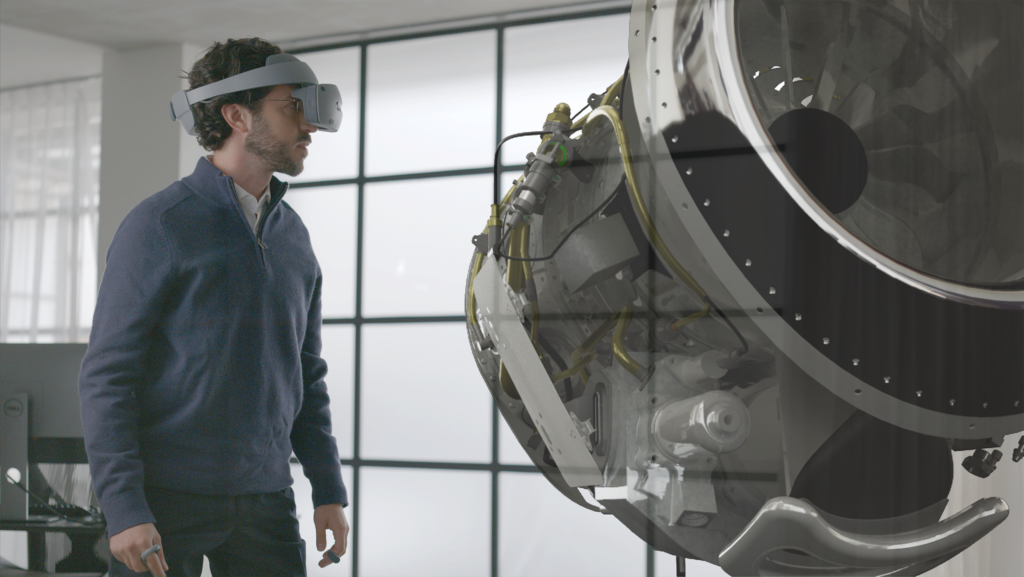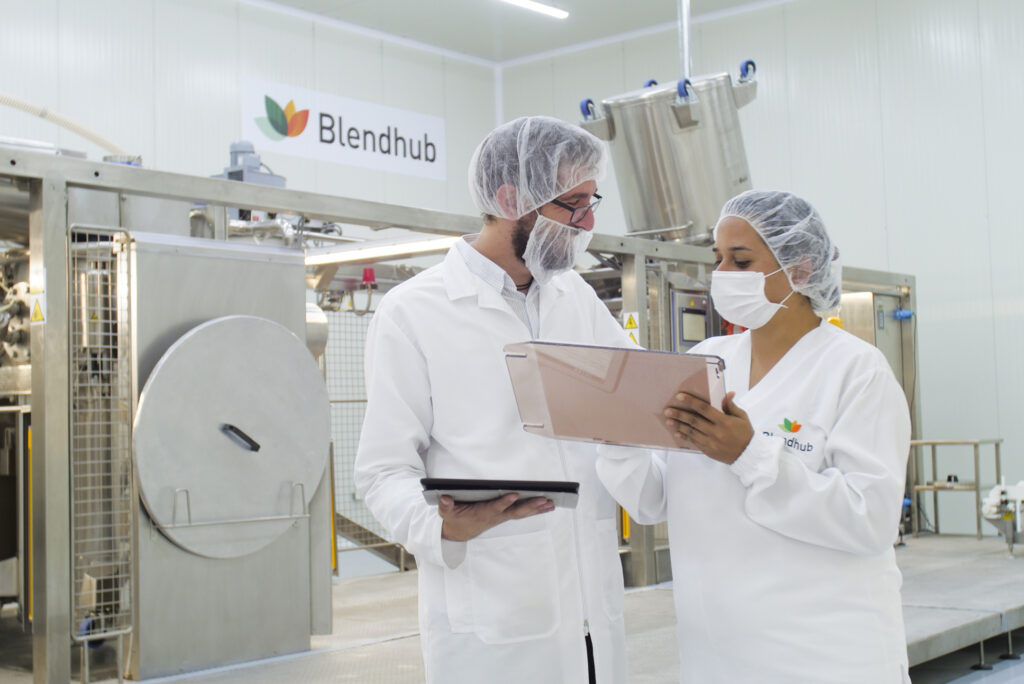CES 2024: Reflections on what I saw, heard, and learned

The 2024 edition of CES wrapped up a couple weeks ago and I have been taking time to reflect on what I saw, heard, and learned during my time at the show. Unsurprisingly, CES featured intriguing technologies and innovative products across both consumer spaces and industrial applications. Several key trends were on display on the show floor, demonstrating exciting advancements and potential applications for technologies like artificial intelligence and machine learning (AI/ML), digitalization, extended reality (XR), and more.
Demonstrations of advanced technology and its creative application are inspiring for engineers and technologists, and there was plenty to behold on the show floor!
CES 2024 showcases interesting technology and creative solutions
The show floor was rife with the all the technologies one would expect of a high-profile trade show on consumer-focused software and electronics products. AI/ML, XR, and others dominated much of the marketing and promotional materials found on the shop floor. This was, frankly, not that surprising. These technologies are highly salient in consumer and industrial spaces, and the interest is bound to attract companies hoping to take advantage of the appeal.
The show had much more to offer outside of AI/ML and XR products and technologies. Autonomous vehicles for several different applications were on display, with everything from the familiar self-driving car to autonomous tractors and utility vehicles. Exciting new electric vehicles (EVs) and EV concepts were also announced at the show, showcasing the more immediate future of the automotive and transportation industries. Finally, I saw dozens of amazing everyday electronics products including smart home appliances, personal devices, and a transparent TV.

From my view, the more surprising and interesting observation was in the diversity of industries being represented at the show, and thus in the diversity of industries that are taking advanced software, electronics, and digitalization seriously in their plans for the future. Household appliances, automobiles, medical devices, food production, heavy equipment, and more all were featured on the show floor.
Siemens’ partners demonstrate power of digital transformation
Siemens had a large presence at CES 2024 as well, highlighted by the excellent keynote address kicked off by Dr. Roland Busch, Siemens’ President and CEO, and featuring several Siemens partners and business leaders. The keynote centered on the concept of the industrial metaverse, exploring how it can help solve real world problems by providing an immersive space, backed by real engineering data, that combines human ingenuity with the power of AI. This potent combination will accelerate innovation and contribute to the creation of technologies and solutions that can help us overcome immense challenges like sustainability, healthcare access, and more.
Transforming engineering for the future
The partners featured in Siemens’ keynote and on the show floor constitute an illustrative sample of the technologies, topics, and fascinating innovations that could be found at CES. For example, Siemens and Sony Corporation introduced a new solution that brings together Sony’s new extended reality (XR) headset and Siemens’ Xcelerator portfolio of software to make design and engineering work more immersive and intuitive.
The headset and accompanying controllers enable engineers and other stakeholders to view, manipulate, and explore designs for products or sub-systems in fully immersive and collaborative environments, much like they were holding them in the physical world. Notably, the design being reviewed can be examined on its own, or in the context in which it will be used, allowing for a holistic view of the product or sub-system. The steering wheel design of a championship-winning Red Bull Racing Formula 1 car, for instance, can be validated firsthand in an immersive reconstruction of the digital twin of the race car.

And on the AI front, Siemens and Amazon Web Services (AWS) announced a new facet of their partnership that will make it easier for companies to build secure and responsible generative AI applications. Specifically, Amazon Bedrock, which provides access to leading generative AI models, is being integrated in to the Mendix low-code platform, making it much easier for companies to take advantage of the capabilities of generative AI to increase productivity and support their workforce with powerful new tools. What makes this all exceptionally cool is that building these applications requires no coding experience and can be accomplished through drag and drop commands.
Rethinking design and manufacturing
Two other partners showed off how they were embracing digital transformation to enhance production and supply chain efficiency while increasing access to critical resources.
One of these partners, Unlimited Tomorrow, is embracing digitalization and advanced design and manufacturing technologies to reduce the cost and lead times for patients in need of life-changing prosthetic limbs. Traditional methods of prosthetic production require up to a year before completion and come at significant cost. Unlimited Tomorrow aims to cut both time and cost by employing digital scans and additive manufacturing to rapidly design and produce custom-fit prosthetics. By embracing advanced design and manufacturing methods, Unlimited Tomorrow can design and deliver a custom prosthetic arm five times faster than the traditional process.
Blendhub is also embracing digitalization with the goal of feeding the world through advanced technology and a revolutionary manufacturing mindset that moves production into portable and decentralized micro-factories. Blendhub can deploy a portable food factory to help underserved communities gain access to nutrition using local ingredients. As these factories spread out around the world, the company will rely on digital tools to trace ingredients through their supply chain and ensure their quality, and to manage and customize thousands of recipes to meet local needs and demands. Digital solutions also help Blendhub maintain a commitment to environmental stewardship throughout their supply and production ecosystem.

Advanced technology, new perspectives
The common thread among the keynotes, demonstrations, and other exhibitions of advanced technologies was how these technologies were being leveraged to enable a new perspective or approach to familiar challenges. From startup food and beverage and medical device companies to multinational firms with established brands, technologies like XR, AI/ML, additive manufacturing and more are being used to fundamentally rethink how products are developed and how global supply and production chains are managed.
Of course, what I haven’t mentioned so far is the importance of the people behind the technology that are pushing it forwards to achieve the incredible innovations displayed at shows like CES. These innovations are possible because of great leadership in companies and organizations around the world. It is no surprise that, beyond technology, I also noticed a strong sense of leadership emanating from the many executives and business leaders I had the pleasure of meeting and interacting with at the show. I was inspired by the passion and vision these leaders displayed, and how they used clear communication to get the best of their teams on their journey to the future.
Ultimately, I left CES feeling that the combination of effective leadership and innovative technology will result in a future where the digital will help us to overcome the limitations of the physical to solve problems and deliver valuable and enriching products to people around the world.


